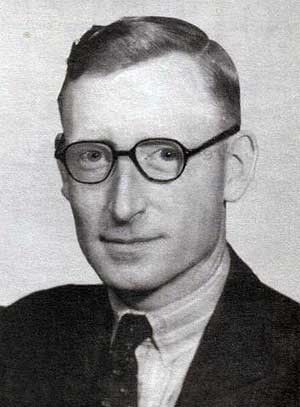- Posted Dec. 22, 2013, 8 a.m. - 11 years, 7 months ago
Tommy Flowers and The Colossus
Tommy Flowers
Born: 22 December 1905
Died: 28 October 1998
Profession: Engineer
Nationality: British
Engineer Thomas Flowers (“Tommy”) was born in London’s East End in 1905 and undertook an apprenticeship in mechanical engineering as a young man, never dreaming that this would be the first stepping stone to a career filled with professional achievements, the most famous of which being the Colossus Computer. Working for the General Post Office (GPO) in 1926, he gained a thorough understanding of switching electronics through his work at the research station in Dollis Hill. This would later prove crucial to his work at Bletchley Park from 1941 onwards.
The Colossus was developed by Flowers and his team and in 1943 he became a Member of the Order of the British Empire. He invested personally in the creation of the machine, but post-war saw him only compensated £1000, which did not cover the amount he had invested and he actually shared this money with his team. He also applied for a loan through the Bank of England to build a machine similar to Colossus, but was denied as it was deemed impossible for such a device to work, and as the Official Secrets Act prevented Flowers from proving his previous work on Colossus, he hit a dead end.
Following on from the war, Flowers went on to become the Head of the Switching Division at the Post Office Research Station, eventually establishing the first all-electronic telephone exchange, the Highgate Wood Telephone Exchange. He then became the Head of the Advanced Development Group at Standard Telephones and Cables Ltd.
Following his death in 1998, various commemorations have been set up in his memory. These include The Tommy Flowers Centre for young people, Tommy Flowers drive in Kesgrave, and a life size bronze bust, located in Martlesham Heath in Sussex.
Colossus Computer
Developer: Tommy Flowers
Manufacturer: Post Office Research Station
Year Operational: 1944
Memory Specs: None
Programmable: Yes
The Colossus Computer was the world’s first programmable electronic digital computer and was designed and developed during World War 2 by a team of developers led by code breaker Tommy Flowers. Completed in late 1943, the machine was functional and in operation by February 1944 and played a huge part in cracking the German codes, helping the British army to eventually win the war.
Only one model was designed initially, as the ground-breaking technology used was as yet untested, but when Colossus proved itself successful, it was further developed and several Colossus models preceded the original.
Once the war had been won, to maintain secrecy Winston Churchill ordered the destruction of the Colossus machines and all associated documentation. Tommy Flowers actually did this himself, and has been quoted as saying, “That was a terrible mistake. I was instructed to destroy all the records, which I did. I took all the drawings and the plans and all the information about Colossus on paper and put it in the boiler fire. And saw it burn”
Today, the Bletchley Park museum has a fully working replica of a Colossus Mark 2; this was completed as part of the 2007 Cipher Challenge where radio amateurs worldwide were pitted against the newly reconstructed machine to decode three messages encrypted and transmitted from the Heinz Nixdorf Museum. Radio amateur Joachim Schüth won, partly as the Colossus team were hampered by poor reception through using WW2 radio equipment.
Latest Articles
-
Our latest testimonial for Infix 6
Dec. 19, 2016, 2:40 p.m. -
Most commonly translated Turkish words
Feb. 6, 2015, 9 a.m. -
Merry Christmas & A Happy New Year
Dec. 25, 2016, 8 a.m. -
New Save PDF to SVG feature introduced to Spire.Office
Dec. 23, 2016, 11:54 a.m. -
Editing educational PDFs – a user perspective
July 21, 2014, 8:03 a.m.




